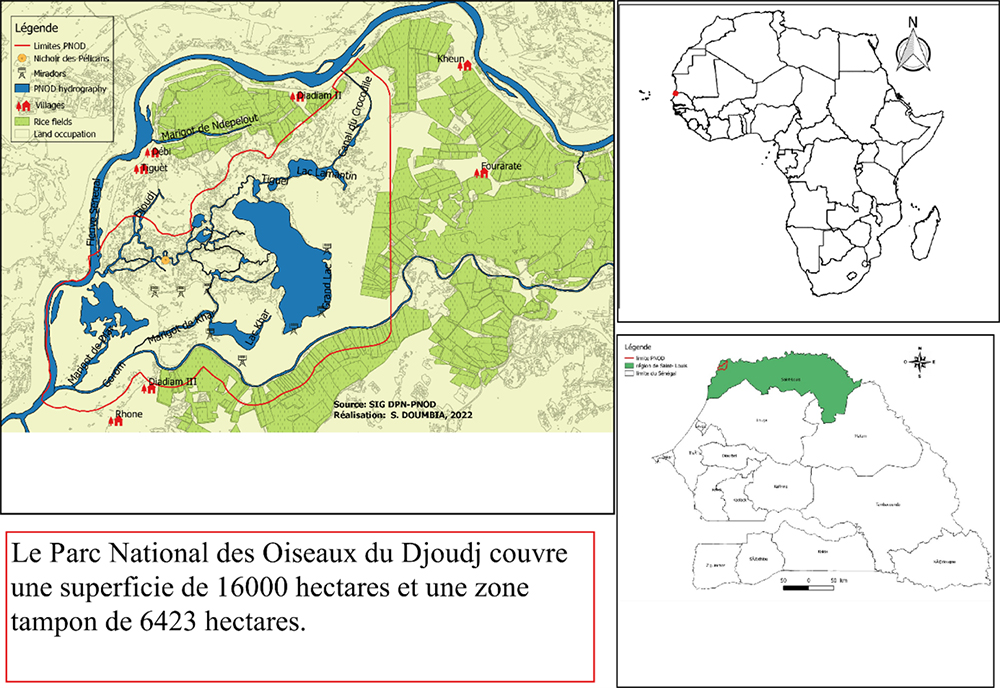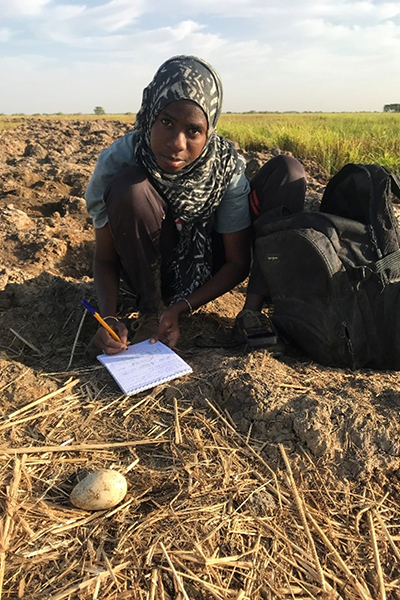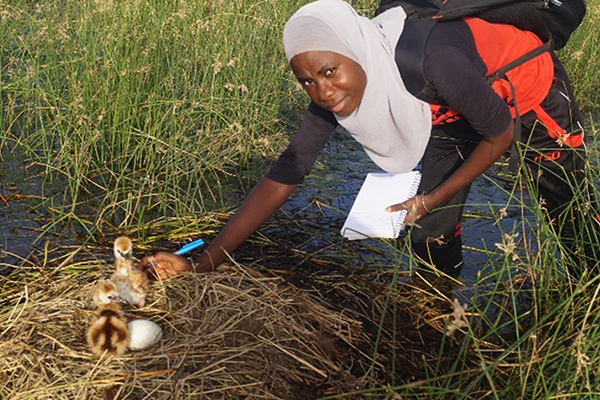The large population of Vulnerable Black Crowned Cranes in Northwest Senegal relies on the 16,000-hectare Djoudj National Bird Park (Le Parc National des Oiseaux du Djoudj). To better understand the cranes’ breeding locations and threats to the species, we administered a questionnaire to residents of 13 villages on the park’s boundaries. We completed the surveys between April and June during the cranes’ breeding season. The target respondents were farmers, fishermen or others who could identify a Black Crowned Crane, particularly its breeding sites.

Our survey results identified 14 nesting sites within the park and seven sites in surrounding areas. According to the 32 respondents who identified a nesting site, the Black Crowned Crane nests in flooded lakes, backwaters, floodplains and aquatic meadows either during or at the end of the winter period. These surveys led to the discovery of new nesting sites, including the Crocodile floodplains northeast of the park and the Débi floodplains to the northwest.
This study also allowed us to define the nesting site habitat, including floodplains, aquatic meadows and abandoned rice fields. These sites are shallow wetlands (60 cm) fed by fresh water from nearby rivers.

We identified egg predation and theft, livestock wandering, human disturbance and fishing as the main pressures on the cranes during their breeding season. The introduction of livestock into breeding sites in search of fodder leads to the destruction of the nest or the trampling of eggs. In addition, fish traps are often observed at breeding sites, which could trap or kill the birds. Human disturbance, i.e., poachers, is a frequent phenomenon noted during the construction period of the nest that can lead to nest abandonment. Outside the breeding season, Black Crowned Cranes are threatened by predation by dogs, human disturbance, electrocution on overhead powerlines, and poaching of adults.
The conversion of the wetlands to rice fields, the discharge of agricultural effluents into water bodies in the park suitable for crane breeding, deforestation, and encroachment into the park’s buffer zone are the threats we identified at the breeding sites during the study. Rice cultivation is the human population’s primary activity on the park’s periphery. The crop is grown in wetlands that would otherwise be suited to the breeding of the cranes, leading to a loss of breeding sites. Furthermore, the discharge of rice effluents within the park further leads to habitat loss by the proliferation of invasive aquatic plants such as Typha clogging up waterways.

The interviews led to the discovery of new nesting sites and the consideration of the pressures noted on the habitat to implement conservation measures. The cranes prefer wetlands covered with non-woody formations of the genus Scirpus or Sporobolus that serve as nesting sites and refuges for chicks during their growth. Therefore, regular monitoring of nesting sites, the search for new locations, and the awareness of riparian populations (for the enhancement of nesting sites) are the protection measures that are being carried out with the aim of good conservation of the species.
We thank the International Crane Foundation, in partnership with the Endangered Wildlife Trust, for their technical support. We also thank the Leiden Conservation Foundation for their financial support, since this study began in 2017 (Master’s degree level). We also thank the Directorate of National Parks for access to protected areas during research work and technical support. And at the Cheikh Anta Diop University of Dakar, we particularly thank the Faculty of Science and Technology for training, research and supervision.
Story by Sira Doumbia, Ibrahima Gueye, Constance Agbogba and Papa Ibnou Ndiaye of the Department of Animal Biology, Faculty of Science and Technology, Cheikh Anta Diop University of Dakar, Senegal and the Directorate of National Parks, Ministry of Environment and Sustainable Development Dakar, Senegal
